

Max Davies
2026 GWM Haval Jolion review
1 Hour Ago
The mighty Swift may seem like it has never changed, but timeless design aside, the little Japanese car still proves a very worthy choice for city car shoppers.
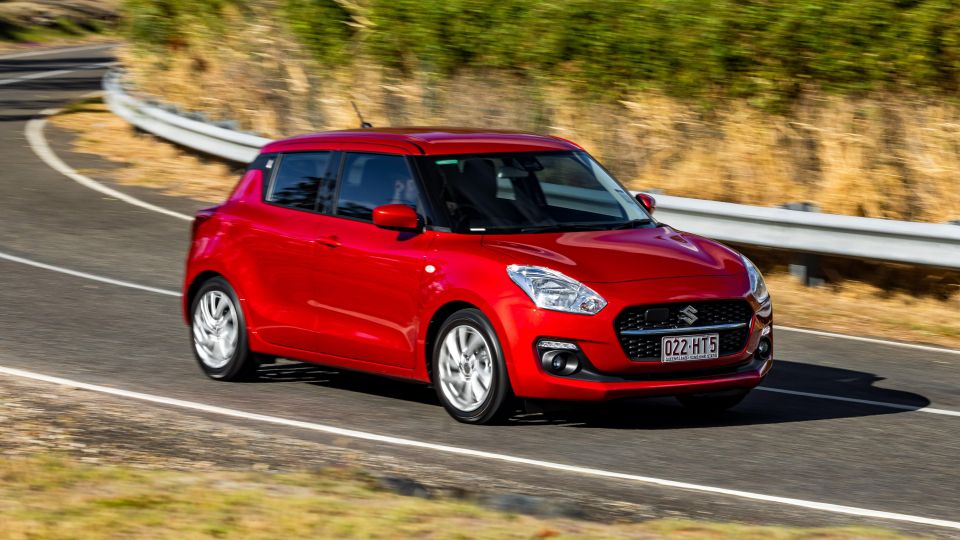
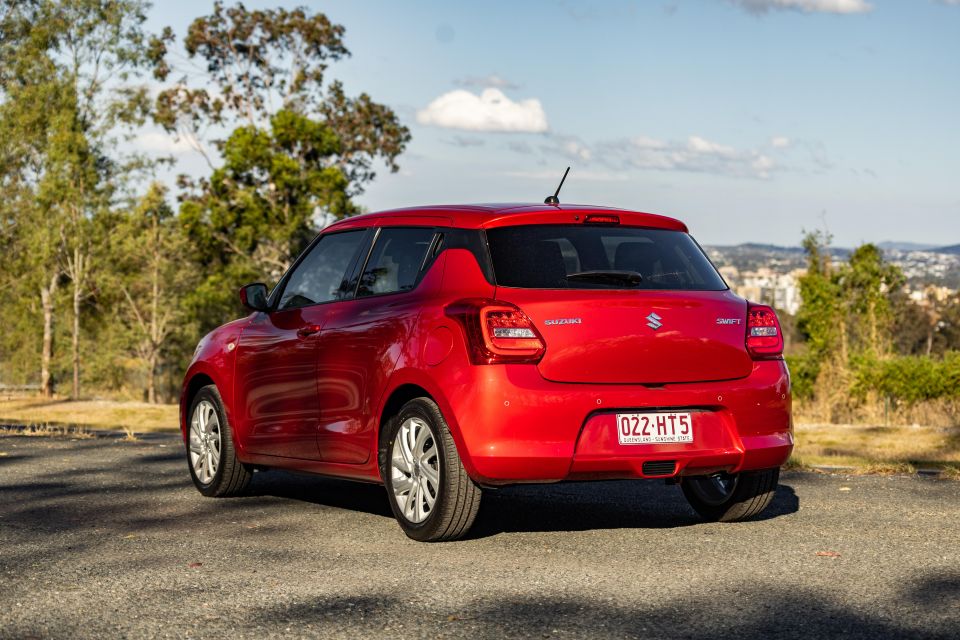

Quickly see how this car stacks up against its competition. Select any benchmark to see more details.
Where expert car reviews meet expert car buying – CarExpert gives you trusted advice, personalised service and real savings on your next new car.
The third-generation Suzuki Swift has continued to capitalise on the popularity of its predecessors, and provide a viable choice for first-time car buyers or those looking for an ideal city car that provides high levels of safety, decent technology and great driving dynamics.

Suzuki has remained conservative in its design changes regarding its very successful Swift. Many remember the first-generation Swift that came out in 2004, but perhaps won’t be able to tell the second and third generations apart.
This is deliberate on Suzuki’s behalf, as the company has decided that the Swift is now an icon and preserving its fun boxy shape is part of nameplate’s appeal. Automotive icons are hard to build, but when you have one, car companies are often reluctant to throw them away and start from scratch.
Think of the Mercedes-Benz G-Wagen or Porsche 911, the Swift is – in its own way – just as iconic to a generation of buyers that saw it as the perfect first or second car, with its modern yet playful styling. At one stage, the Swift was the most modified car in the Australian market, and you only really modify a car you love.
So there is no lack of love for the Swift, however the world has changed and what was once one of the cheapest offerings in market is today a very mature, safe and engaging offering priced accordingly.
The Suzuki Swift measures 3845mm in length, 1735mm in width and sits 1495mm high on a 2450mm wheelbase.
The light hatchback competes with not just the likes of the Mazda 2 and soon-to-be-retired Kia Rio, but also the slightly larger and cheaper MG 3. Still, it has consistently proven itself a strong contender given its build quality, reliability and safety credentials.
The car we are testing here is the Suzuki Swift GL+, which is a QLD-only edition – Suzuki has a long history of successful distribution specifically in QLD, separate to the rest of the country – and is priced from $24,990 with the CVT automatic.
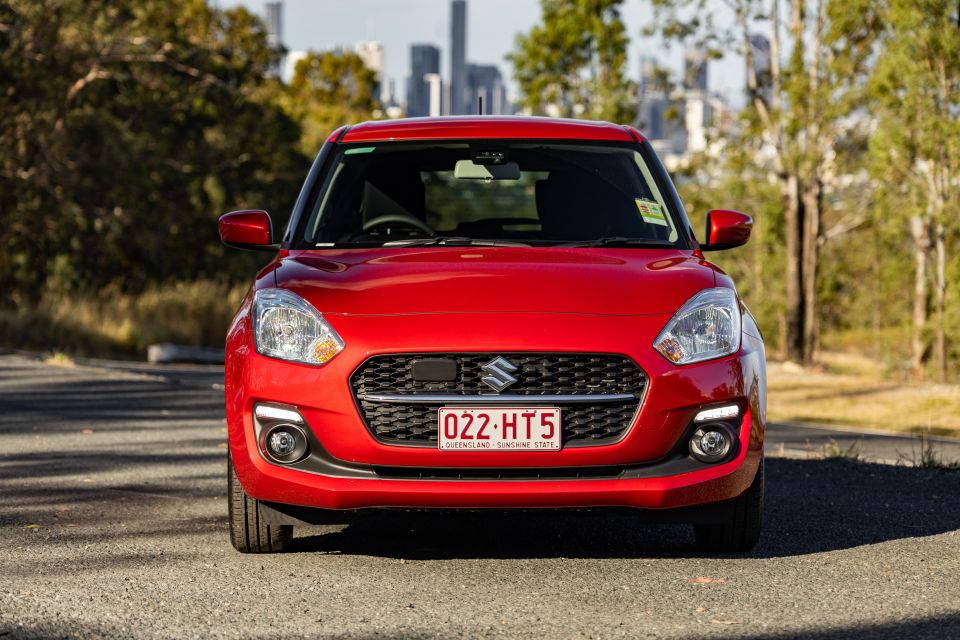
For a review of the Swift in other parts of Australia, check out our Swift showroom.
This puts it within a few thousand of the MG 3 (which doesn’t have the safety credentials) as well as the Kia Rio (or Picanto if you want to go smaller) and Mazda 2.
You can find the full pricing for the Swift range here.
Buy your new car without the stress. It's fast, simple and completely free.

Great service from Travis and team, second time I have used this business would not hesitate to recommend them to anyone
Craig C.
Purchased a Ford Ranger in Sunshine Coast, QLD
CarExpert helped Craig save thousands on his Ford Ranger, now let us save you on your next new car.
Find a dealIf you’re expecting an ultra-modern interior, look elsewhere.
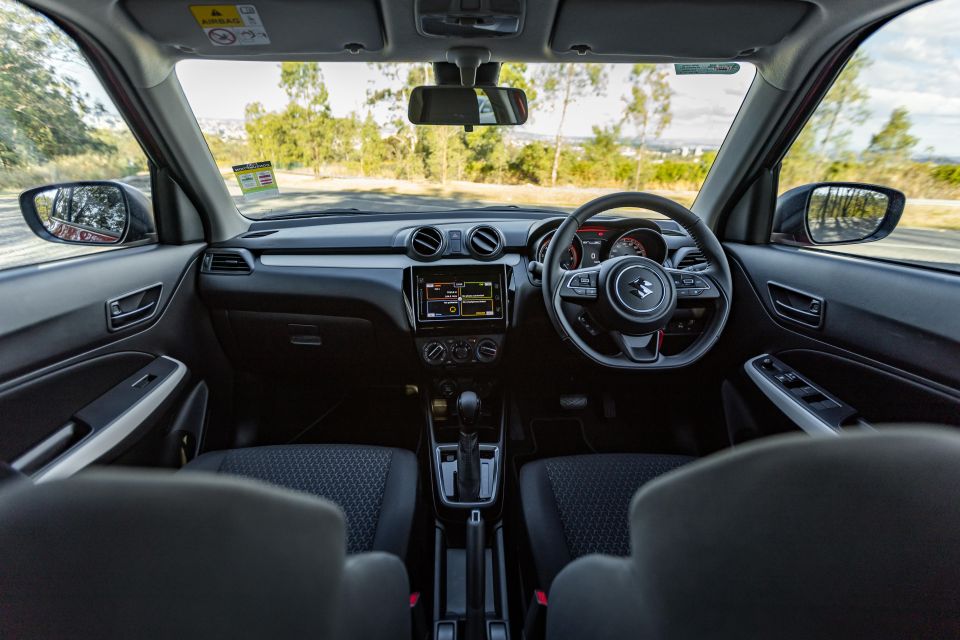
For the asking price the Swift hits a sweet spot of usable technology, build quality and refinement, however its interior design is conservative at best, with traditional switchgear, steering wheel and layout.
Everything is exactly where you want it to be, and none of the switchgear nor the steering wheel feel cheap to touch or use, which is exactly what we would expect from Suzuki.
We found the seats comfortable to sit in with no complaints even after a long drive. One of the things that made the Swift so popular from day one has been the huge amount of headroom, which remains true today.
Taller occupants will find themselves well accommodated, as will those sitting in the back seats, given the generous amount of knee room.

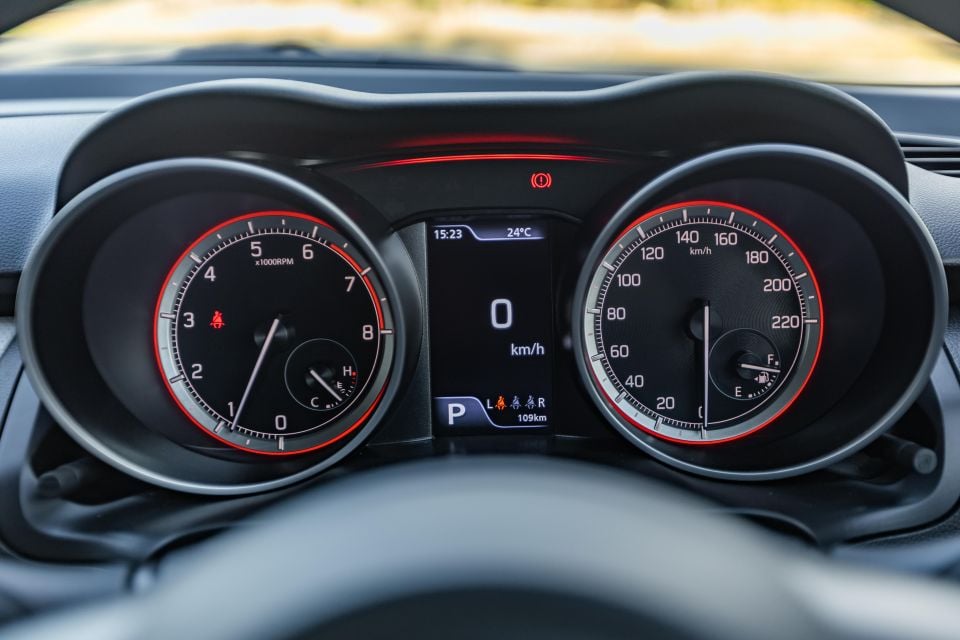
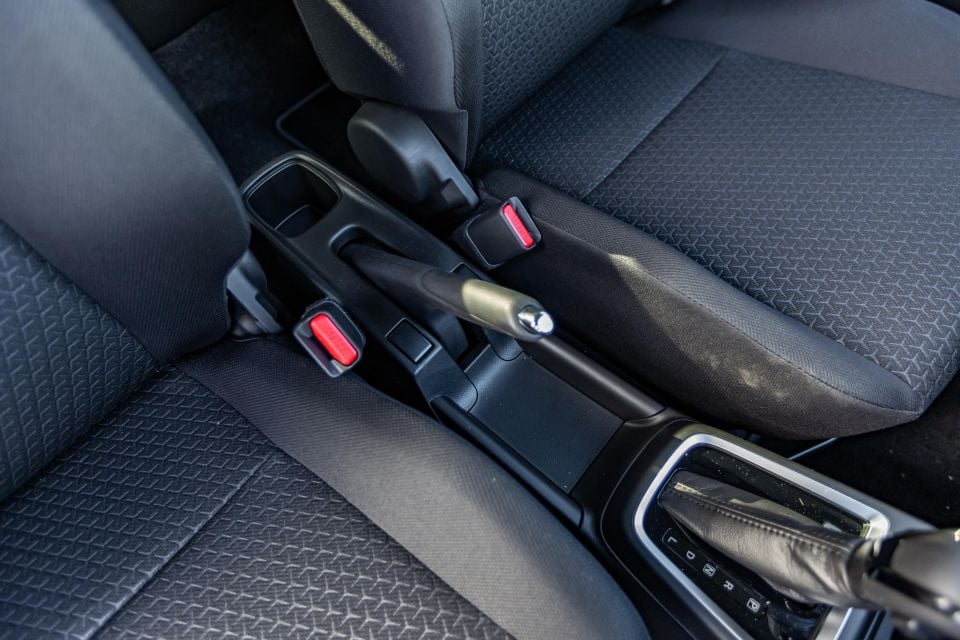
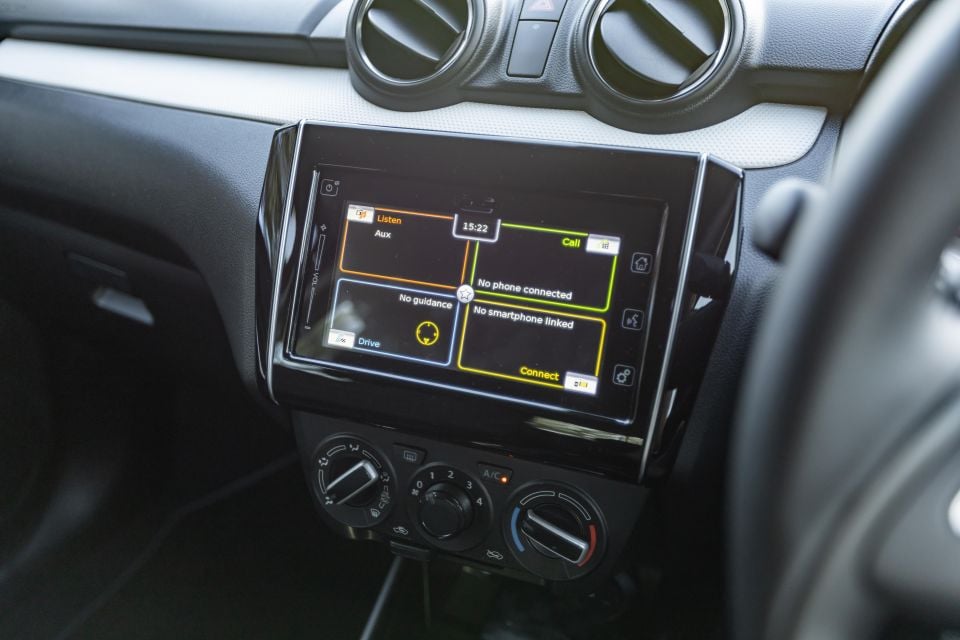
There are two cup holders in the front between the two seats in front of the gear lever, with additional spaces in the doors for larger bottles.
We found the practicality of the storage areas in the Swift to be more than enough for normal use and the cup holders in the dash ideally placed low and in an easy to reach location.
The 7.0-inch touchscreen infotainment system is back in the Swift GL+ thanks to the chip shortage sorting itself out, and that means native Apple CarPlay support. It does have its own built-in navigation, but you really won’t use it if you have an iPhone.
The screen is of decent resolution, and while we would have liked wireless CarPlay or at least USB-C ports for faster charging, the current system works well when plugged in.
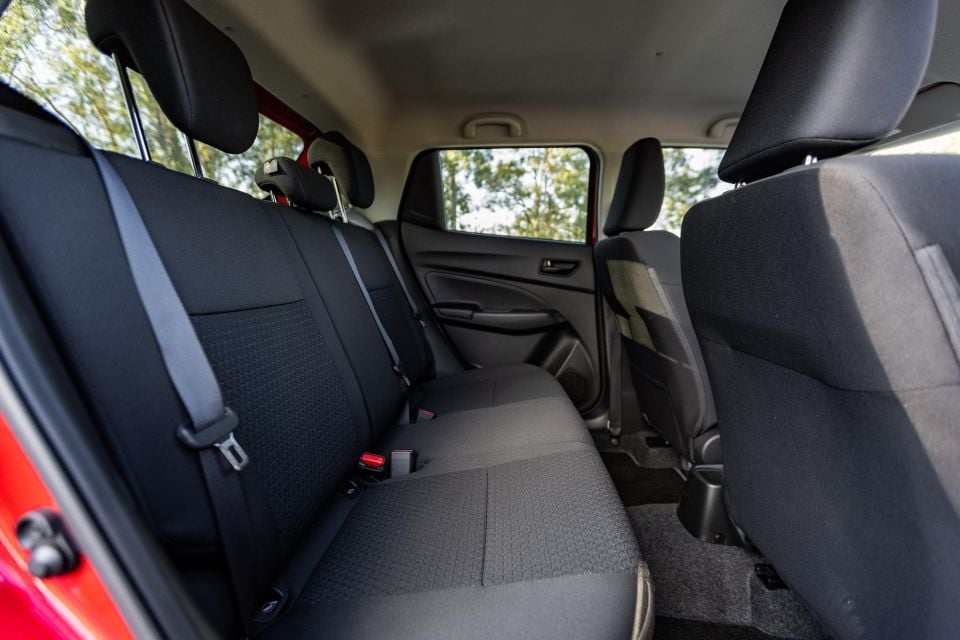
If you are already using or upgrading to a new USB-C phone (such as the upcoming iPhone 15), you will need a USB A/B to USB-C cable (rather than Lightning) to get it to work, but it should have no issues regardless.
We tested numerous phone calls while driving and found the microphone quality to be pretty good. The stereo was also reasonable for the price, but lacked a little bit of bass. Nothing an aftermarket upgrade won’t fix.
This author measures 179cm tall, and could comfortably sit behind my preferred driving position, suggesting that you can easily fit four large adults in this car without issue.
Five adults is possible, of course, but the width of the Swift is not going to be that kind if your passengers fancy KFC a few times a week.
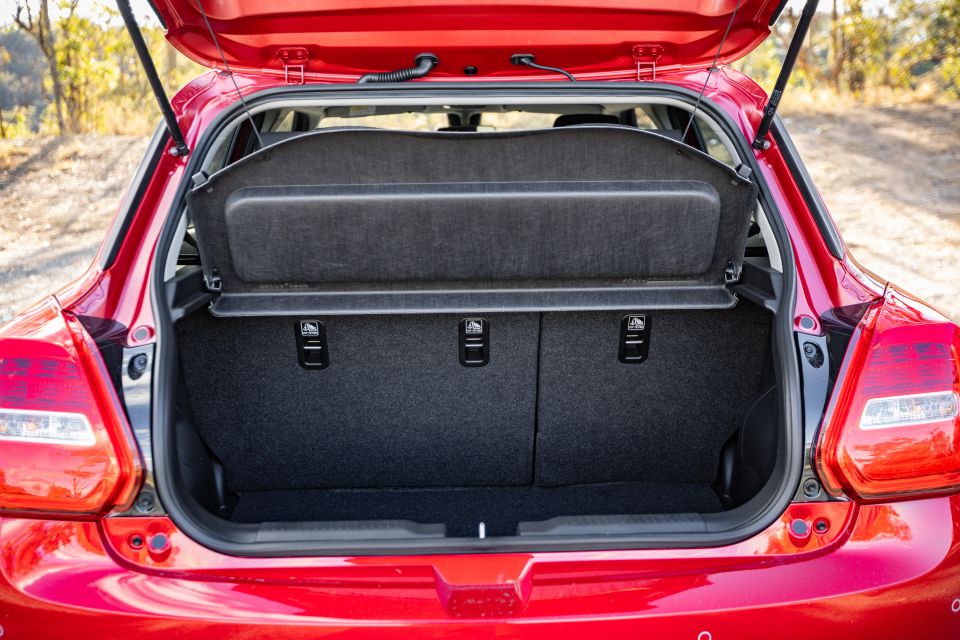

Likewise, two baby seats in the back are very doable, and with ISOFIX and top-tether latches it’s a simple process. If you do have just one child, you can fit a giant pram in the back so long as you’re willing to fold down one side of the back seats, but if you need to use the entire back row, you will either need a regular sized pram or a bigger car.
There is 242L of boot space with the rear seats in use, which extends to a substantial 556L when the rear seats are folded down, making the Swift an ideal Ikea car as well.
Despite many car companies looking to simplify their line-ups to save costs and increase production efficiencies, the Swift is offered in three different engine choices – a very unusual thing in this segment these days.
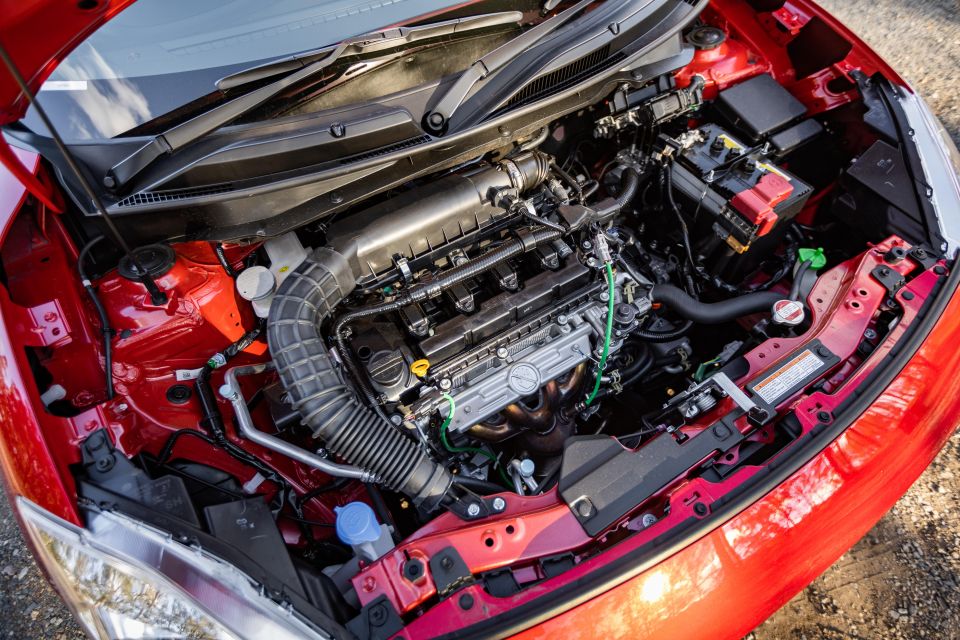
The model we are testing here, is powered by a 1.2-litre naturally-aspirated four-cylinder petrol engine which Suzuki refers to as K12C. It has 66kW of power at 6000rpm and 120Nm of torque at 4400rpm.
If you step up to the GLX, you will get a smaller three-cylinder 1.0-litre petrol engine, but it gets a turbocharger that sees power jump to 82kW at 5500rpm and torque to 160Nm between 1500-4000rpm.
Those that really must have the best can opt for the Suzuki Swift Sport, which comes with a turbocharged 1.4-litre four-cylinder petrol engine that pumps out a massively healthy 103kW of power and 230Nm of torque.
Apart from the power differences between the three options, the other notable feature change is that the base 1.2-litre engine is offered with either a five-speed manual transmission or a continuously variable transmission (CVT). The turbocharged motors ditch the CVT in favour of a proper six-speed automatic with actual gears, which definitely improves the driving experience – the Swift Sport is also available with a six-speed manual.
CVTs are a different type of automatic that to most will be indistinguishable from a regular auto but are inherently not the same thing, if you want to read more on what different transmissions mean, click here.
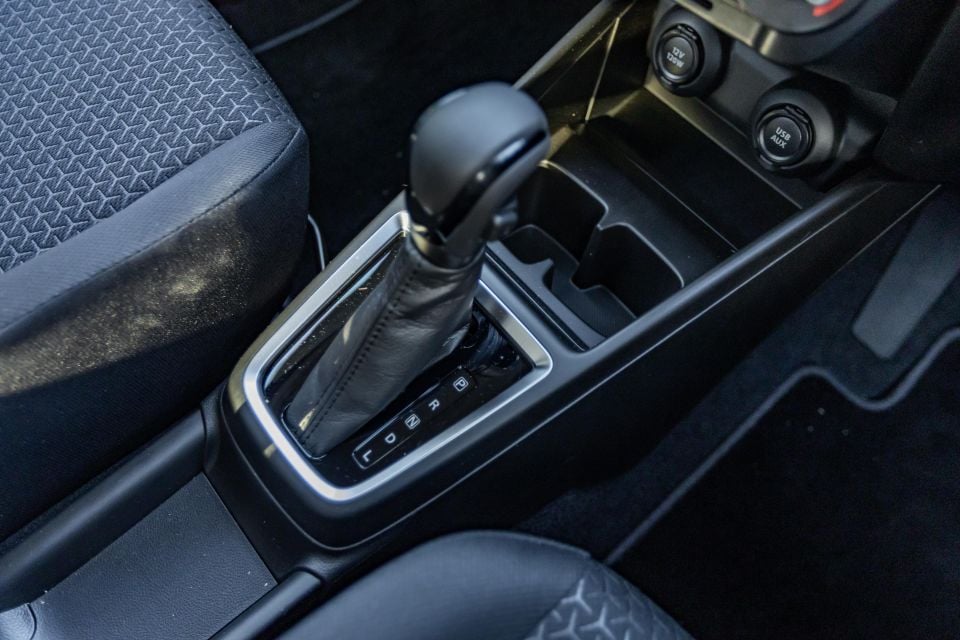
| Swift Variant(QLD) | GL NAVI, GL & GL+ | GLX | Sport |
|---|---|---|---|
| Number of cylinders | 4 | 3 | 4 |
| Engine Size | 1.2L NA | 1.0L Turbo | 1.4L Turbo |
| Power (kW @ rpm) | 66 @ 6000 | 82 @ 5500 | 103 @ 5500 |
| Torque (Nm @ rpm) | 120 @ 4400 | 160 @ 1500-4000 | 230 @ 2500-3500 |
| Fuel Type | 91 RON | 95 RON | 95 RON |
| Transmission | 5MT or CVT | 6AT | 6MT or 6AT |
| Fuel usage (L/100km) | 4.6L (5MT) / 4.8L (CVT) | 5.1L | 6.1L |
If you know a little bit about cars and engines, you may have looked at the power figures above and wondered if the Swift is a bit of slow thing? The answer is absolutely not.

The fundamental aspect of physics, when it comes to acceleration, is all about power-to-weight. And while the entry-level Swift engine only has 66kW of power and 120Nm of torque, it weighs just 900kg (kerb), which means the power-to-weight ratio is very reasonable.
Don’t get us wrong, it’s not a hot hatch – you can get pretty warm if you step into the Swift Sport, which only weighs 90kg more but offers nearly 50 per cent more power and almost double the torque – but it’s absolutely adequate for the average person driving around town and occasionally taking a long drive from the city out to the countryside.
The little Swift will get up to speed and performs the regular overtakes without too much hassle, and so long as you can get used to the sound of the CVT, you won’t feel like you’re in a small, slow car. Compared to the MG 3, it’s definitely a more refined driving experience and a much more lively car.
While it may not be a sporty car, per se, even the base Swift does carry elements of sporty fun. No doubt derived from the brand’s rich history in rallying and motorsports, the front-wheel drive city car is zippy, well-poised and always willing to entice its driver to go a little faster around the next corner.
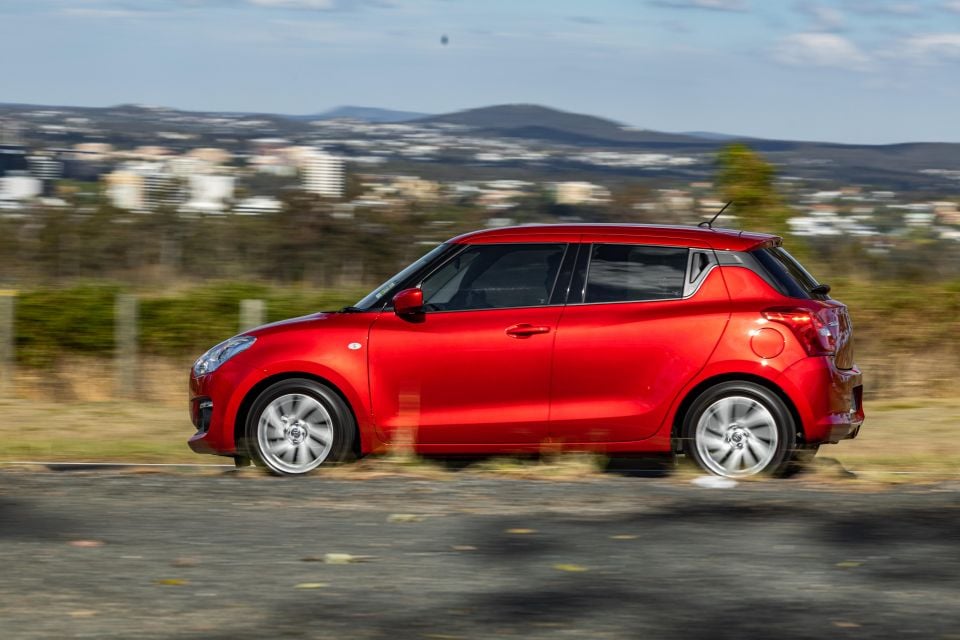
We found our time behind the wheel to be both enjoyable and rewarding given the car’s eagerness for a little fun. What we didn’t appreciate as much, were the overly sensitive active safety systems that warned we were about to have an accident or leave our lane a little more dramatically than we would have liked.
We got used to it and actually adjusted our driving to be a little less aggressive, but in the city the forward collision system could chill out a bit – but as they say, better safe than sorry.
Another feature we loved about the Swift is the active cruise control, which means you can set your speed and distance to the car in front and let little Suzuki take over the acceleration and braking.
This is super handy on long highway drives and the Swift did a great job of maintaining a good distance at the set speed. This is a feature you absolutely will not find in the MG 3.
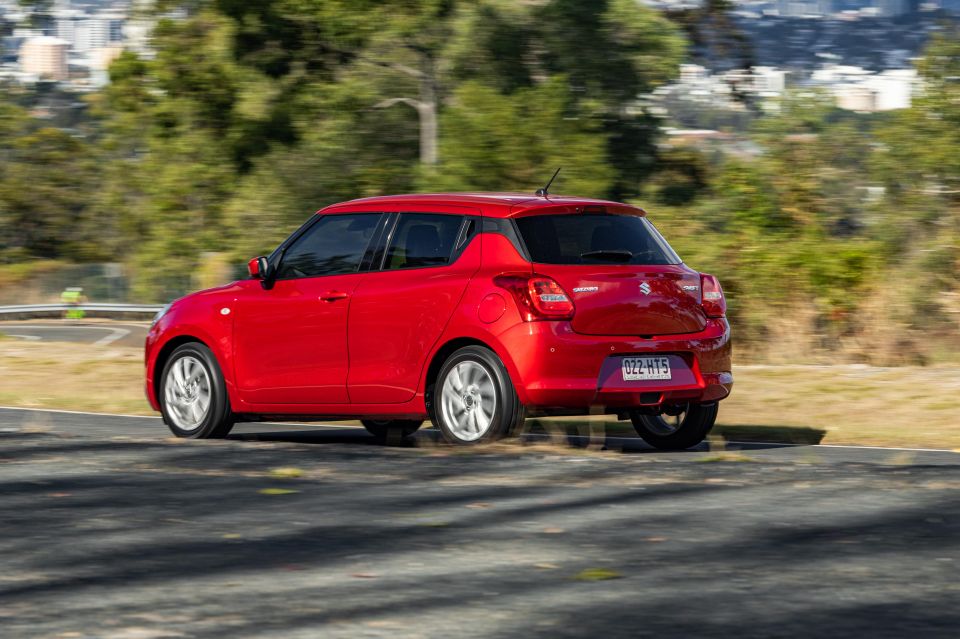
The ride comfort and bump absorption capacity of the Swift is also very good, with Brisbane’s terrible roads proving no challenge to the well-engineered suspension system of the Japanese car.
Overall, the driving dynamics and handling of the Suzuki Swift is actually one of its biggest highlights, and the confidence it provides will make driving in any condition or road a much safer experience.
Suzuki’s claimed fuel economy figure for the GL+ is 4.8 litres of standard 91 RON fuel per 100km, and while that may be achievable if you’re super conservative with your right foot – we had a brand new car with 12km on it, so it needed to be broken in and managed mid-7s – expect to be closer to 6L/100km if you like to get up and go.
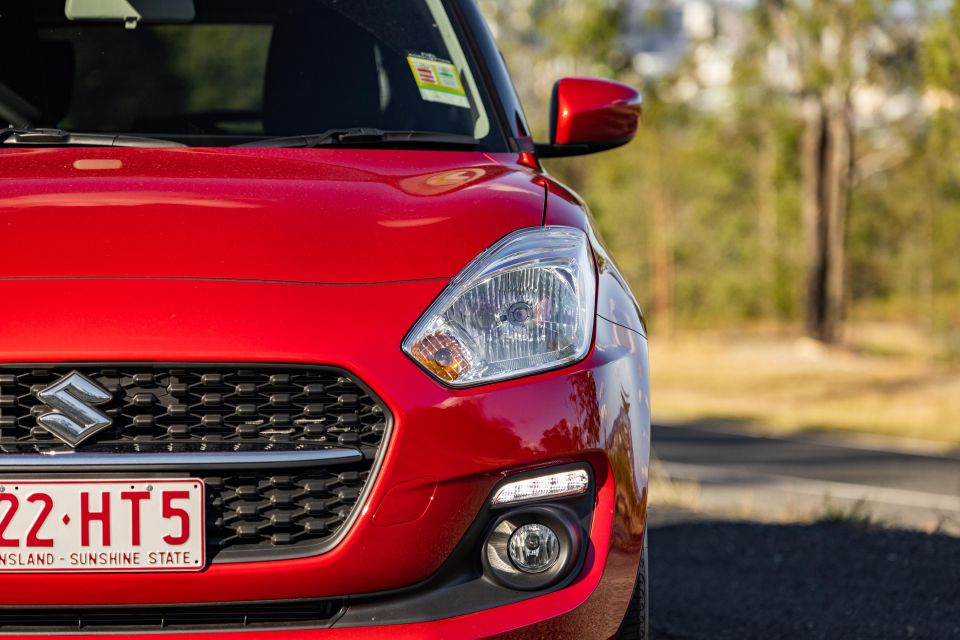

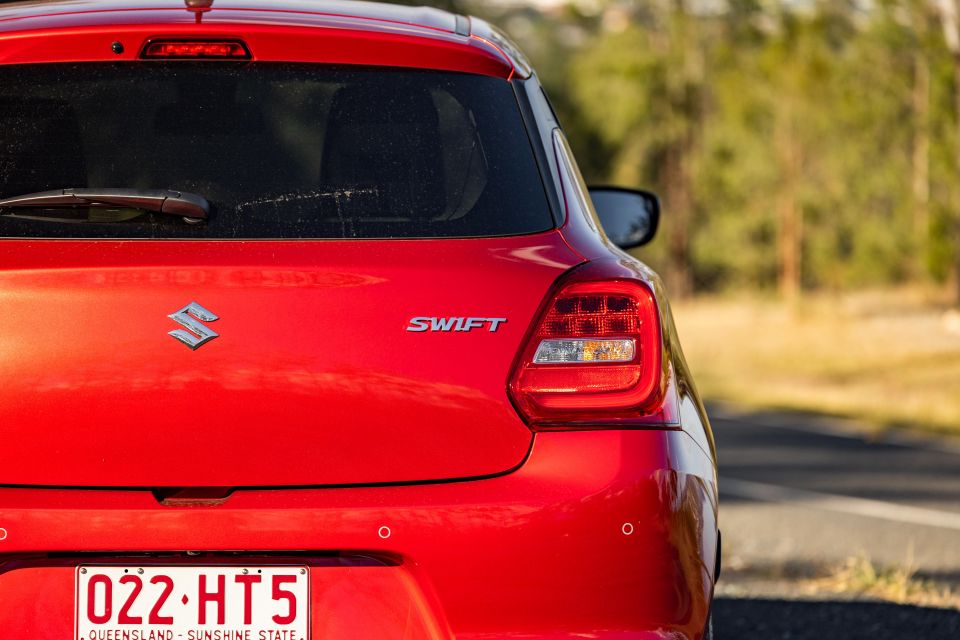

Swift GL+ highlights:
The Suzuki Swift scored the highest five-star ANCAP safety rating back in 2017 and has not been tested since.
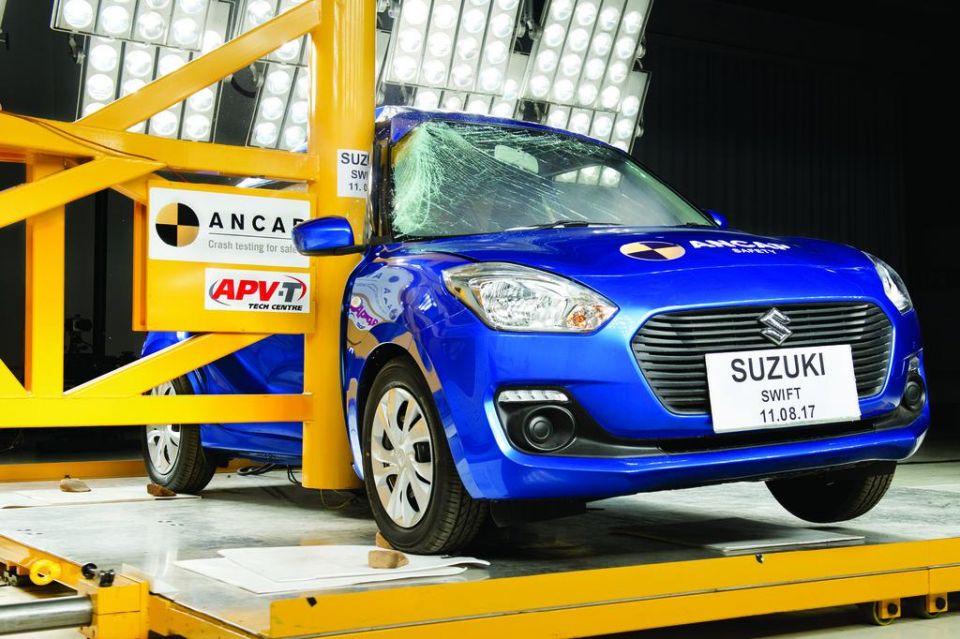
Where expert car reviews meet expert car buying – CarExpert gives you trusted advice, personalised service and real savings on your next new car.
Models without the autonomous braking (such as the base GL) scored lower, but the fundamental passive safety systems of the airbags, crumple zones, and build quality is the same across all models.
Back under the 2017 regulations, the Swift scored 35.13 out of a possible 37 points in local safety testing.
The Swift’s safety credentials are one of its primary draw cards, given it competes with the MG 3 – which has never been tested by ANCAP and rated just three stars by Euro NCAP.
In Queensland, the Suzuki Swift is a pretty cheap car to run thanks to a fixed-price service program that will make sure you will pay the same price no matter which authorised Suzuki QLD dealer you go to.

Suzuki says the 1.2-litre Swift needs a service every 12 months or 15,000km – whichever occurs first.
Suzuki Swift 1.2 service pricing:
Suzuki provides a national five-year, unlimited kilometre warranty.
Whether you are looking to buy your first car or keen to buy a second small city car for the family to get around in, the Suzuki Swift is an excellent offering that will not disappoint.
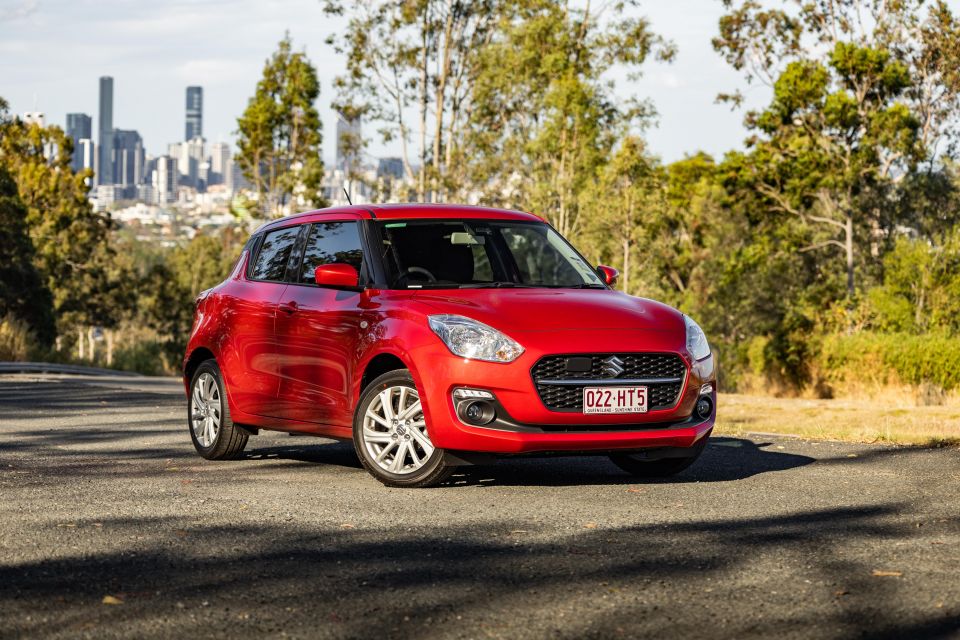
It’s a reliable, safe and fun car to drive and own. It proves that timeless design doesn’t need to change for the sake of change itself.
There are things we love about it; such as its driving dynamics, interior packaging and space as well as its ride quality and comfort. But it can also do with some minor improvements, like the addition of USB-C charge ports, wireless Apple CarPlay (though wired works great), and a more refined CVT experience.
The good news is that there are no asterisks when it comes to buying a Swift. It’s not trying to hide a poor safety rating, bad fuel economy, expensive servicing costs or some other catch.
It’s a great choice that ticks many boxes, and that’s why it continues to remain a popular choice amongst buyers across Queensland and Australia as a whole.

Click on the images for the full gallery
BUY: Suzuki Swift MORE: Everything Suzuki Swift
Where expert car reviews meet expert car buying – CarExpert gives you trusted advice, personalised service and real savings on your next new car.
Alborz Fallah is a CarExpert co-founder and industry leader shaping digital automotive media with a unique mix of tech and car expertise.


Max Davies
1 Hour Ago


Damion Smy
9 Hours Ago
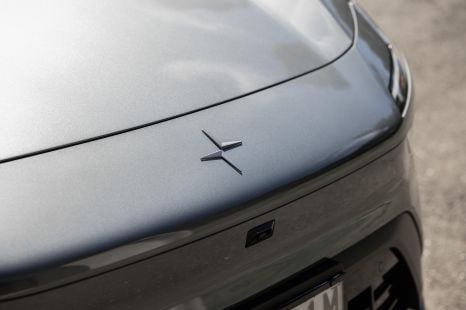

Damion Smy
10 Hours Ago


Damion Smy
12 Hours Ago


Damion Smy
14 Hours Ago


CarExpert.com.au
15 Hours Ago